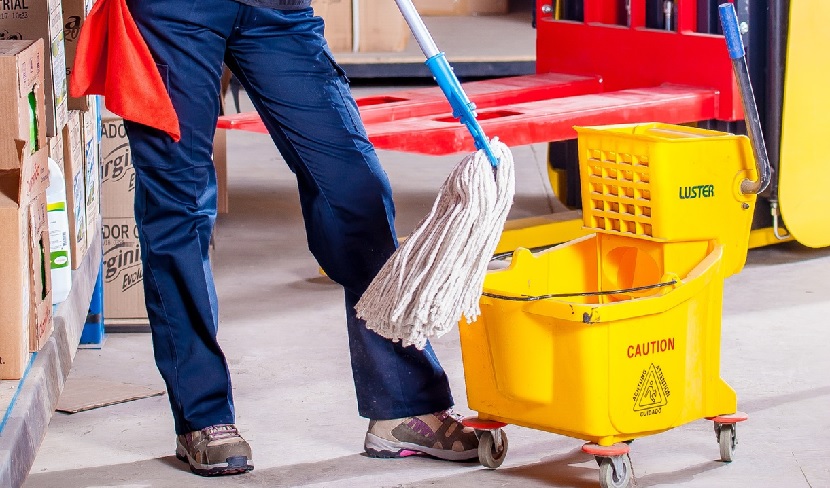“While devastated at this unimaginable loss, we are so very proud that Ryan died while trying to protect his fellow employees and restaurant patrons.” — family of Ryan Baldera
On November 7, 2019, a restaurant employee in Burlington, Massachusetts was overcome by fumes from a “strong chemical cleaning agent” and died. Thirteen others were taken to the hospital but appear to have recovered.
The initial press report stated that the cleaning agent was sodium hypochlorite.
My Initial Thoughts
My first thought was, “Why report it as sodium hypochlorite? Why not say that this is what is in household bleach?”
My second thought was, “Don’t trivialize it by saying this is ‘household bleach’. Somebody died.”
My third thought was, “Why report it as sodium hypochlorite? Somebody died. Why not say that this is what is in household bleach, the same thing that is in most homes, and someone died?”
My fourth thought was, “People work with bleach all the time without dying. The fumes are pretty acrid, so why would anyone stick around the material long enough to be fatally exposed?
My fifth thought was, “What kind of tyrant runs a place where people would risk fatal chemical exposure rather than move to safety?”
More Information
It is important to remember that the initial reports out of any incident are always incomplete and usually inaccurate.
Follow up stories indicated that the sodium hypochlorite solution was a commercial product called “Super 8”, an 8 to 10% solution of sodium hypochlorite in water manufactured by Auto-Chlor Systems. Household bleach is a 5 to 6% solution sodium hypochlorite, so Super 8 is stronger than household bleach, but is still essentially the same material.
The Super 8 apparently combined with another cleaning chemical that had been spilled earlier: Scale Kleen. Scale Kleen, also manufactured by Auto-Chlor Systems, is a mixture of phosphoric acid and nitric acid in water, with the mixed strong acids comprising about 40 to 50% of the solution. When the two cleaners combined, the mixture turned green and began bubbling—generating gas.
The restaurant employee was not a minimum wage laborer who had been ordered into harm’s way by some tyrant, but Ryan Baldera, the general manager of the restaurant. Ryan had directed the evacuation of other employees, and then stayed to squeegee the solution out of the kitchen to an outdoor drain.
Don’t Mix Cleaners
If you work anywhere in the chemical enterprise, you have learned enough chemistry and have heard enough times to know that you should not mix cleaning chemicals.
When bleach is mixed with strong acids, it forms chlorine gas, which is an acutely toxic green gas. Many household cleaners, such as toilet bowl cleaner and descaling agents, contain strong acids.
When bleach is mixed with aqueous ammonia, another common household cleaner, it forms chloramine gases, which are toxic, and hydrazine gas, which is toxic and explosive, as well as chlorine gas.
There is nothing in the press reports that suggests that the two cleaners were deliberately mixed. A bubbling green mass, however, suggests that once inadvertently mixed, they began generating chlorine gas.
Hazard Communication
There are three elements of communications required by 29 CFR 1910.1200, the Hazard Communication standard: safety data sheets (SDSs), labeling, and training. The labels for the two Auto-Chlor Systems products have all the required warnings. The SDS for Super 8 (containing sodium hypochlorite) states that is incompatible with strong acids. The SDS for Scale Kleen (containing strong acids) states that it is incompatible with sodium hypochlorite.
Neither SDS states what that incompatibility means, that it is possible to form fatally toxic concentrations of chlorine gas.
A Hazard Communication program is incomplete if it doesn’t also include training. Did Ryan Baldera know that combining Super 8 and Scale Kleen was dangerous? Most likely, or he wouldn’t have ordered the evacuation of the people working for him. Did he know he was facing a fatal concentration? Clearly not, because he stayed.
He stayed.
Familiarity
The cleaning chemicals at the restaurant were chemicals they used on a daily basis. Without incident. They were versions, albeit stronger versions, of the same cleaning chemicals they used at home. Yet a worker died.
We sometimes become too comfortable with the hazards that are most familiar to us. I once worked on a project where the greatest hazard facing the employees was radioactivity. One worker commented, “Sure, it’s radioactive, but it’s not like we’re working at a chemical plant.” I was struck by that comment because only a few weeks earlier, at a chemical plant, a worker had commented, “I know its toxic and flammable, but it’s not as though its radioactive.”
A familiar hazard may not inspire the dread of the unfamiliar, but that does not mean the risk is any less. When familiarity breeds complacency, the risk goes up.
What Hazards Have You Become Complacent About?
You cannot live at high alert all the time. The stress would kill you. But complacency is also a killer. Are there hazards in your workplace or in your home that have become so familiar, so commonplace, that you no longer pay attention to them?
Walking away from a hazardous condition without incident is not proof that the condition is not hazardous. It’s proof that sometimes we are just lucky. But luck is not a safety strategy. So, take another look at the hazards around you. Don’t let familiarity lead to complacency.
